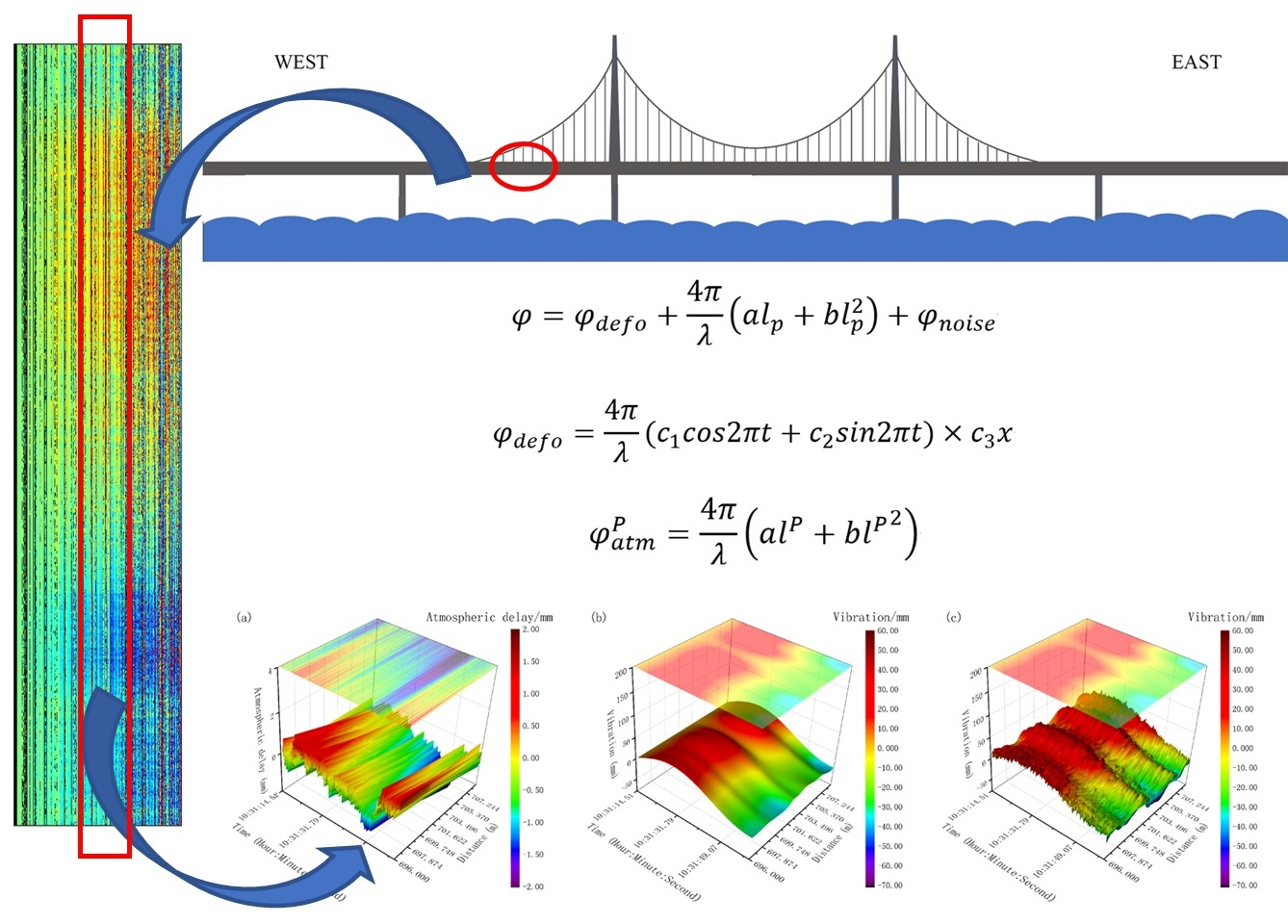Joint Estimation of Ground Displacement and Atmospheric Model Parameters in Ground-Based Radar
发布时间:2023-04-11
点击次数:
影响因子:5.349
DOI码:10.3390/rs15071765
发表刊物:Remote Sensing
关键字:GBSAR; atmospheric delay; displacement estimation; spatial and temporal features; bridge vibration monitoring
摘要:Atmospheric delay is the primary error in ground-based synthetic aperture radar (GBSAR). The existing compensation methods include the external meteorological data correction method, the polynomial fitting method, and the persistent scatterers SAR interferometry (PSInSAR) calibration method. Combining the polynomial fitting and the persistent scatterers targets is the most popular method of GBSAR atmospheric delay compensation. However, the displacement component of the coherent target is always ignored in the atmospheric delay compensation, which is unpractical. A joint estimation method of ground displacement and atmospheric model parameters is developed in this paper. The displacement component is determined by the spatial and temporal features of the objects. The atmospheric delay component is regarded as a systematic error represented by a quadratic polynomial related to distance. The result is resolved by the least-square method. Compared to the existing method, the root-mean-square error (RMSE) of the proposed method had a significant improvement in the validation experiment. In the real in situ experiment, the time series obtained by the GBSAR had a similar trend to that acquired by the Global Positioning System (GPS) receiver. It is indicated that the proposed method can lead to a better deformation estimation by taking the deformation component into account in the atmospheric compensation.
论文类型:期刊论文
学科门类:工学
一级学科:测绘科学与技术
文献类型:J
是否译文:否
发表时间:2023-03-25
收录刊物:SCI
发布期刊链接:https://doi.org/10.3390/rs15071765
附件:
上一条: Separating and unwrapping of residual topographical and time-series deformation phases in PS-InSAR based on zero-temporal baseline combination and time-domain differentiation
下一条: Accessing the Time-Series Two-Dimensional Displacements around a Reservoir Using Multi-Orbit SAR Datasets: A Case Study of Xiluodu Hydropower Station

